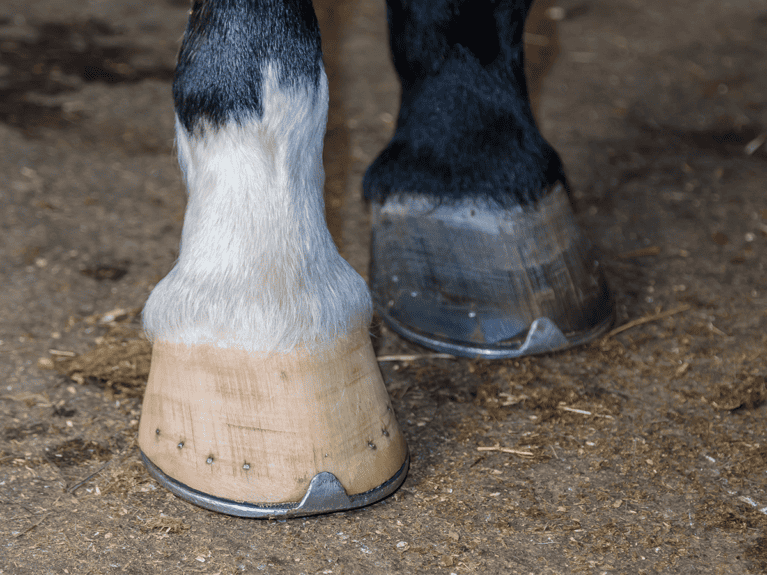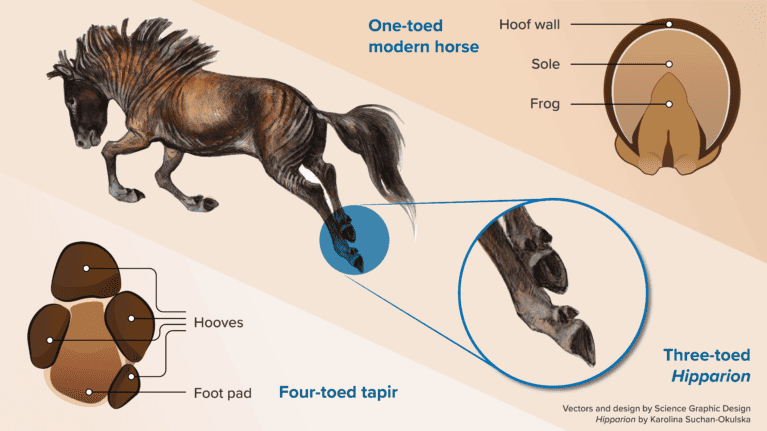
Most Read Articles

Researchers conclude that ancestral equine toes were not absorbed into the modern hoof as previously suggested but simply lost
Interesting new evidence has emerged that confirms that the hoof of the modern horse did not evolve via the fusing of the toes of ancestral equine species but rather that these toes were simply lost to produce a single toe or hoof.

A research paper, entitled Hipparion tracks and horses’ toes: the evolution of the equid single hoof, which has been published in Royal Society Open Science, contradicts a previous theory put forward in 2018 that the toes on extinct equid species fused to eventually become the frog in the modern horse.
The 2018 paper, using studies based on fossils of an extinct three-toed horse, Hipparion, which lived 3.7 million years ago and was not a direct ancestor of the modern horse, concluded that the side toes of horses like Hipparion eventually played a part in forming the frog of modern horses, leaving a single toe that contained other remnants of the lost toes and became the modern hoof. This idea was based mainly on the assumption that ancestral horses did not have a frog.
However, the fact that hoof prints of modern horses do not always record the presence of a frog, coupled with fossil hoofprints that provide evidence of the presence of frogs on three-toes horses, led the team of researchers from the UK, the US and the Netherlands to question this idea. Their work confirmed previous, older theories that the two side toes of ancestral three-toed equines were, indeed, lost and that the frog evolved independently as a unique structure to provide shock absorption and traction during locomotion.
One of the authors of the latest study, Professor Christine Janis of the University of Bristol’s School of Earth Sciences said: “While the notion that modern horses have retained all of their original toes as within-hoof remnants is a novel one, and so rather appealing, it can be shown to be incorrect.”
Very early equids, such as the Eocene Hyracotherium, had feet similar to those of a tapir, with four toes in front and three behind and an underlying foot pad, but in later species, such as Hipparion, the toes were reduced to three all round, with the short side toes playing no or only a limited part in locomotion. While the upper portions – the equivalent of our hands or feet – remain as the splint bones in the modern horse, the digits themselves seem to have disappeared entirely.
Lead author Professor Alan Vincelette of St John’s Seminary, Camarillo, California, said: “Although it does seem the remains of the proximal [upper portions] of the side digits have been retained in modern horses, as the earlier 2018 paper claimed, the distal [lower portions or toes] have simply been lost.”
Additional studies by the team show that the feet of one-toed equines have a different shape from those of their three-toed ancestors, being round rather than oval. The team attribute this change as potentially being related to differences in weight distribution and/or ecological habitat.











